Keto is a high-fat low-carb diet. Based on that definition, any cooking oil or fat is technically keto-friendly. However, not all sources of fat are created equal. There are significant differences in their fatty acid composition, the manufacturing process used to create them, and their individual heat resistance — all of which contribute to their health benefits and/or inflammatory potential.
In this article, we’ll talk about the different types of cooking oils you can find in grocery stores, including why the smoke point of an oil says little about its resistance to heat. I’ll also introduce you to some exotic oils that you’ve probably never used (and might not have even heard of).
Plus, I’ll highlight the oils you should stay away from regardless of your diet, based on their potential to be detrimental to your health.
The star ratings in the table below are based on three factors: the distinct taste an oil/fat might have, the consistency (i.e., it’s not feasible to use a solid fat as salad dressing), and its resistance to heat.
| Baking | Condiment | Frying | Grilling | Sautéing | |
|---|---|---|---|---|---|
| Avocado oil (extra virgin) | ★★☆ | ★★★ | ★★★ | ★★☆ | ★★★ |
| Butter (pastured) | ★★★ | ★★★ | ★★★ | ★★★ | ★★★ |
| Camel hump fat | ★★★ | ★☆☆ | ★★★ | ★★★ | ★★★ |
| Coconut oil (cold-pressed, extra virgin) | ★★★ | ★☆☆ | ★★★ | ★★★ | ★★★ |
| Duck fat | ★☆☆ | ★★☆ | ★★☆ | ★☆☆ | ★★★ |
| Ghee | ★★★ | ★☆☆ | ★★★ | ★★★ | ★★★ |
| Lard (rendered pork fat) | ★☆☆ | ★★☆ | ★★★ | ★★☆ | ★★★ |
| Olive oil (extra virgin) | ★★☆ | ★★★ | ★★★ | ★★☆ | ★★★ |
| Palm oil | ★★★ | ★☆☆ | ★★★ | ★★★ | ★★★ |
| Tallow (rendered beef or mutton fat) | ★☆☆ | ★★☆ | ★★★ | ★★☆ | ★★★ |
Cooking Oil Buying Guide
There are a couple important things you should consider when choosing a fat or oil for cooking, including:
- Manufacturing process
- Type of oil
- Heat resistance
- Fatty acid composition
One of the most important factors is the way the oil was manufactured. Most animal fats, including lard and tallow, are rendered. That means the fat is melted over low heat until all the proteins solidify and any water evaporates. The low heat ensures that the fatty acids — the molecules that make up fat — are kept intact and don’t change their chemical structure.
Seed or vegetable oils are usually extracted by expeller pressing and the addition of chemicals (solvents). That’s why it’s important to choose cold-pressed, unrefined and extra-virgin oils to ensure they have not been exposed to high heat or harsh chemicals.
Roundup of the Best Keto Oils
The list below is sorted alphabetically and doesn’t imply a ranking. With some exceptions, all of the cooking oils on the list are excellent choices for frying, sautéing or drizzling over meals. The type of oil you should use often depends on your personal preferences or taste.
In case you’re unfamiliar with some of these oils, I’ll point out how we use each of them in our paleo-keto household.
1. Avocado Oil
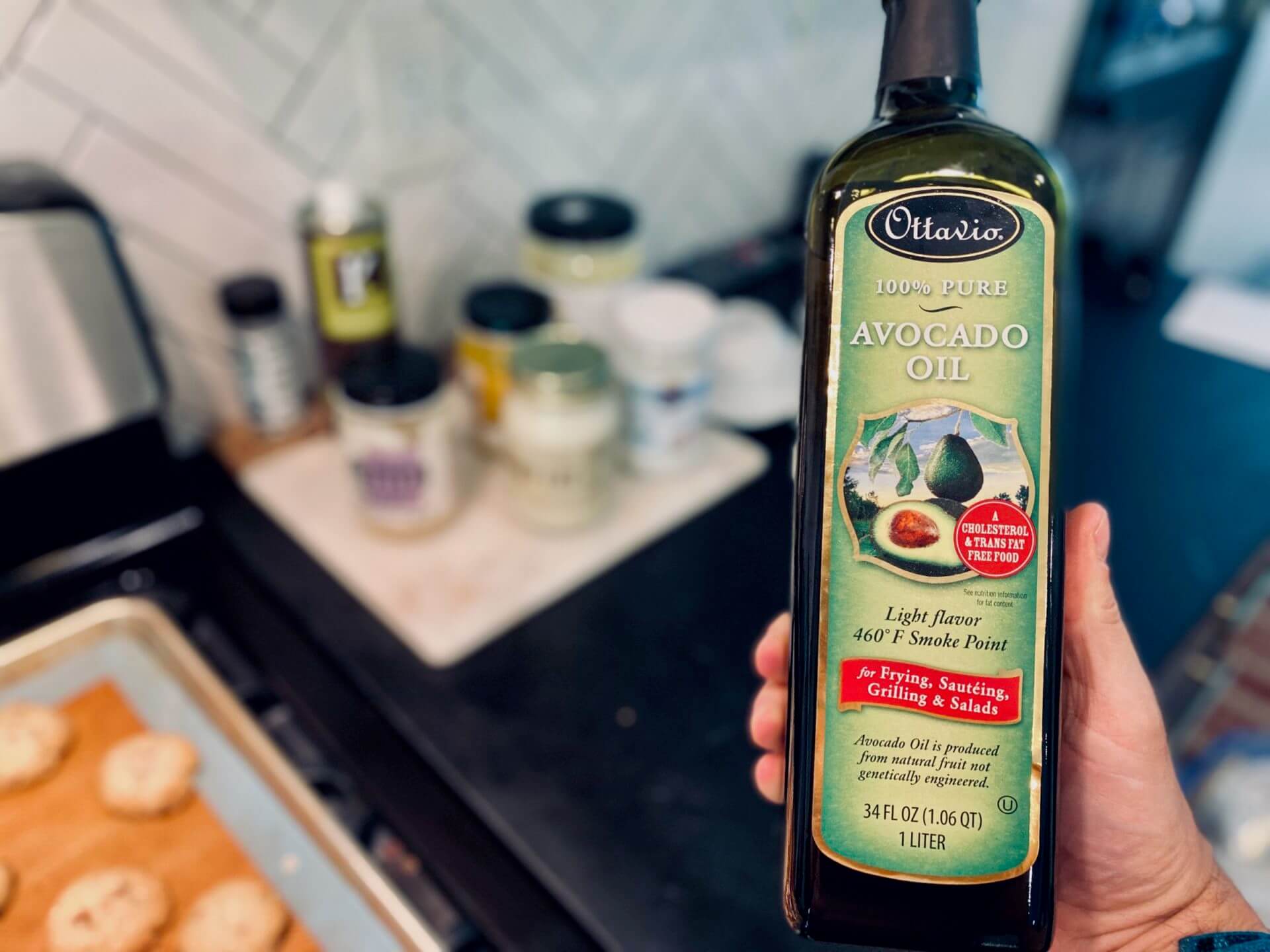
Extra-virgin avocado oil is made by cold-pressing the pulp of the avocado fruit to extract its oil. What I like about avocado oil is that it’s flavorless and has relatively good heat resistance (thanks to its antioxidants) — so you can use it for a lot of different applications.
We often use avocado oil for frying, grilling (as a spray), or satuéing. I’ve also made keto smoothies with it, and sometimes add it to a meal to increase my fat intake.
We get our avocado oil either from Costco or order it online from Chosen Foods or Primal Kitchen.
2. Butter
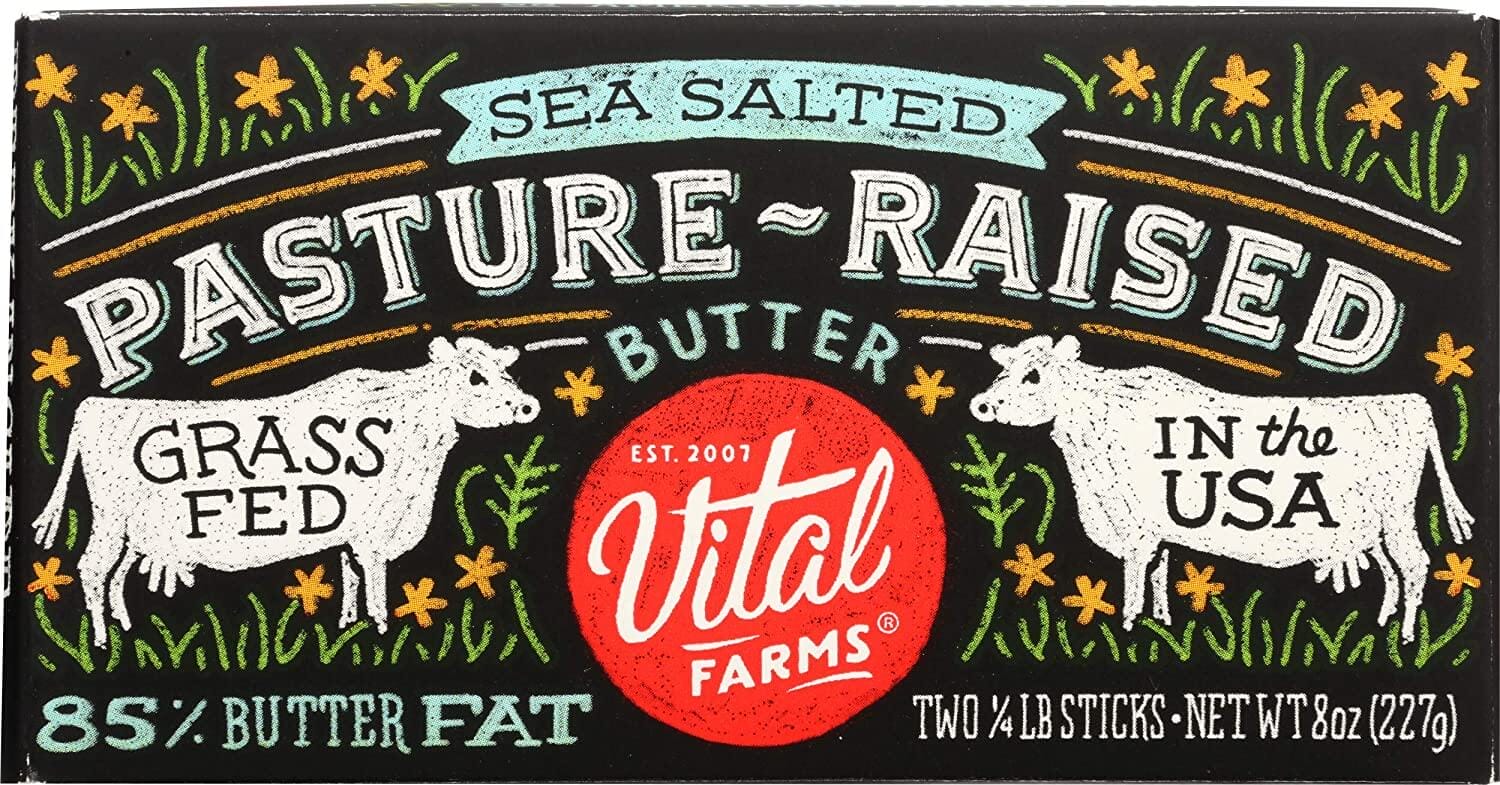
When I started with the paleo diet, I stopped eating all dairy. However, since I converted to a Paleolithic ketogenic diet, I re-introduced pastured butter and certain types of cheeses.
I did so because I recognized that pastured or grass-fed butter is low in lactose (milk sugar), high in saturated fat, and tastes good — especially when smeared on the delicious keto dinner rolls we often make. Additionally, butter is a good source of vitamin A, which acts as an antioxidant that fights free radicals and prevents cell damage.
We usually don’t heat up butter on the stove (we use ghee if we want a buttery flavor). Instead, we use it as a condiment or when making no-bake desserts, such as fat bombs.
Our favorite butter brand is Vital Farms — the company we also get our pasture raised eggs from if we don’t have enough from our own hens — and we usually find it at Whole Foods or Amazon.
3. Camel (Hump) Fat
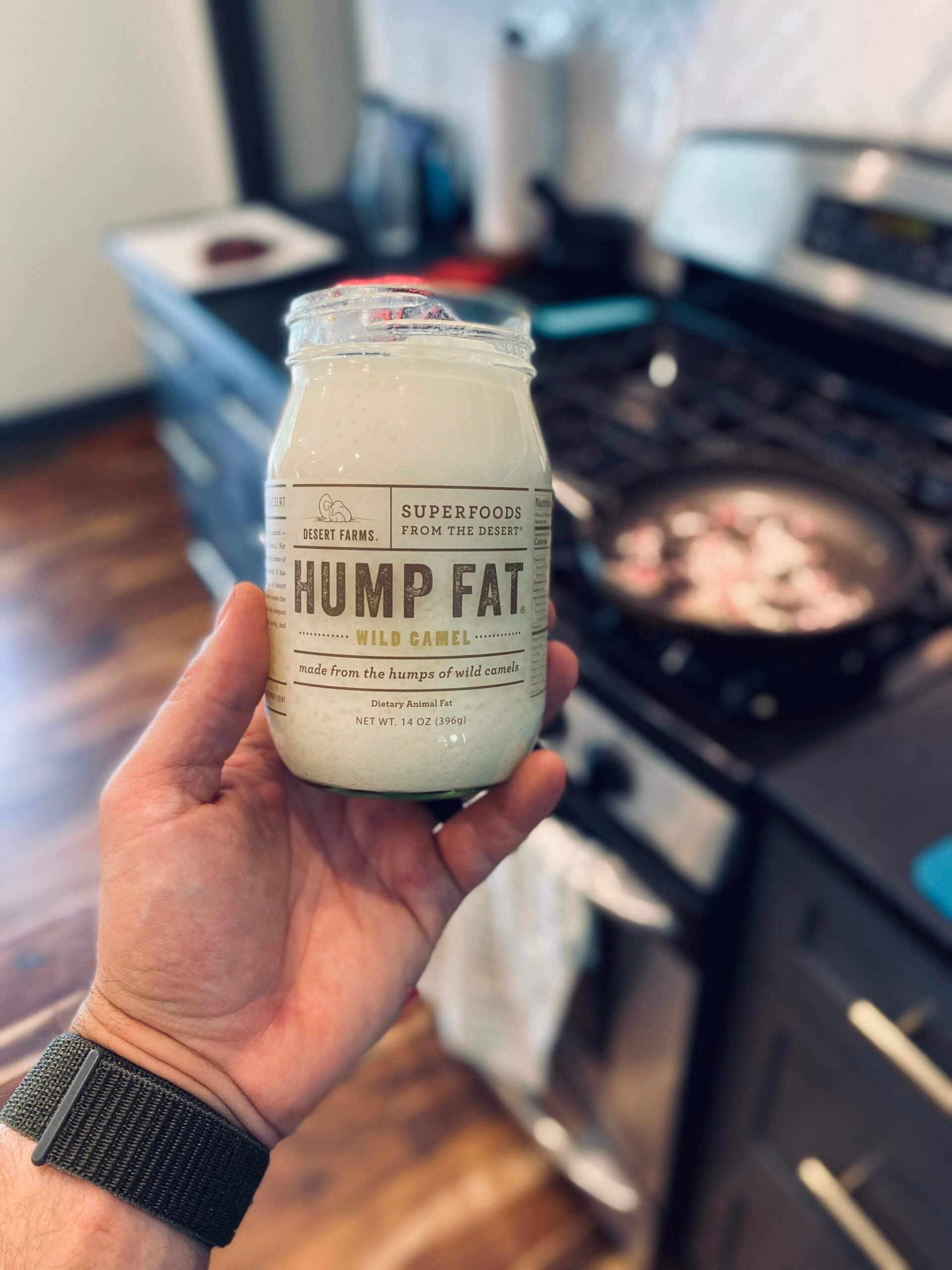
If I had to guess, I’d say you’ve never tried (and maybe even never heard of) camel fat. It’s one of my favorite types of fat because it’s nutrient-dense, high in saturated fats, and incredibly well-suited to high-heat cooking (thanks to a smoke point of 600 degrees Fahrenheit).
If you look at the fatty acid composition of camel fat, you’ll realize that it’s rich in heat-resistant saturated fatty acids. But it’s also got decent amounts of omega-9 fatty acids (three times more than coconut oil) and medium-chain triglycerides (MCTs) which can help you stay in ketosis.
Additionally, camel hump fat has 40% of your daily vitamin B12 in just a single teaspoon, which makes it one of the most nutrient-dense cooking oils available.
We use camel hump fat for everything that involves high heat, including frying and grilling.
Our brand of choice is Desert Farms. They source their hump fat by hunting some of the hundreds of thousands of wild camels that roam the Australian outback — which were brought over by the British in the 19th century.
There’s no need to worry about animal welfare, though; culling the camel population is an important part of managing the ecosystem.
Note that Desert Farms also sells camel milk, which is an excellent and healthier alternative to cow’s milk.
4. Coconut Oil
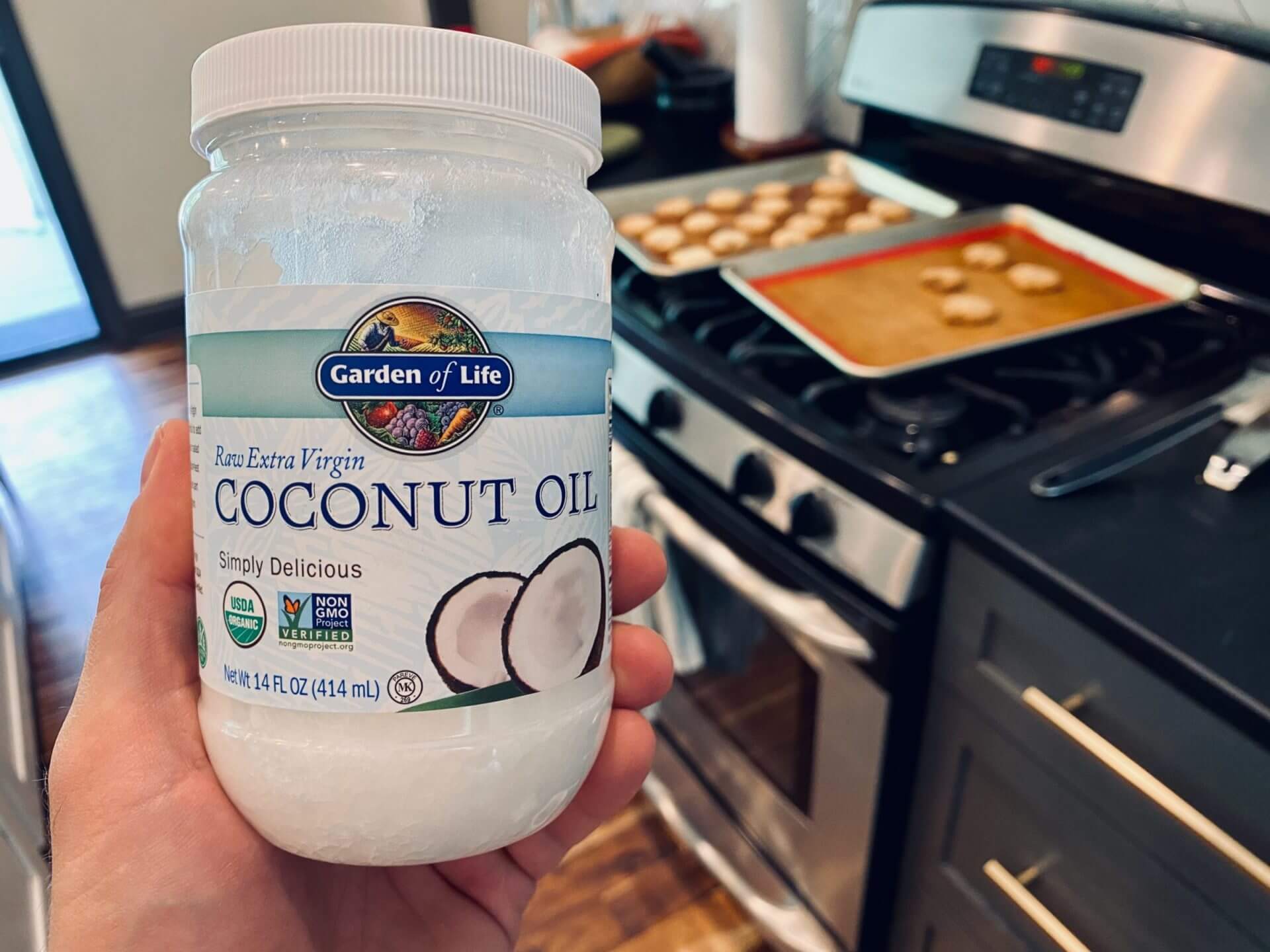
Coconut oil is a favorite among keto adherents because it’s relatively inexpensive and high in MCTs, some of which the liver can convert into ketone bodies quickly to be used for energy. Coconut oil also has a very distinct flavor that many people like, especially in baked goods.
Unfortunately, that distinct flavor limits its applications — especially if you’re trying to prepare a meal that shouldn’t taste like coconut.
We often use coconut oil for cooking, and sometimes for frying eggs or other foods that go well with the oil’s taste.
Note that coconut oil is solid at or below room temperature but liquefies when warm. So if you see a container of half solid/half liquid in the store, don’t worry about it; it hasn’t gone bad.
As far as the oil’s heat resistance is concerned, coconut oil has a relatively low smoke point of just 350 degrees Fahrenheit. However, considering the oil’s high ratio of saturated and monounsaturated fatty acids, it’s super heat resistant.
We usually buy our organic, unrefined and expeller-pressed coconut oil at Costco or from Amazon.
5. Duck Fat
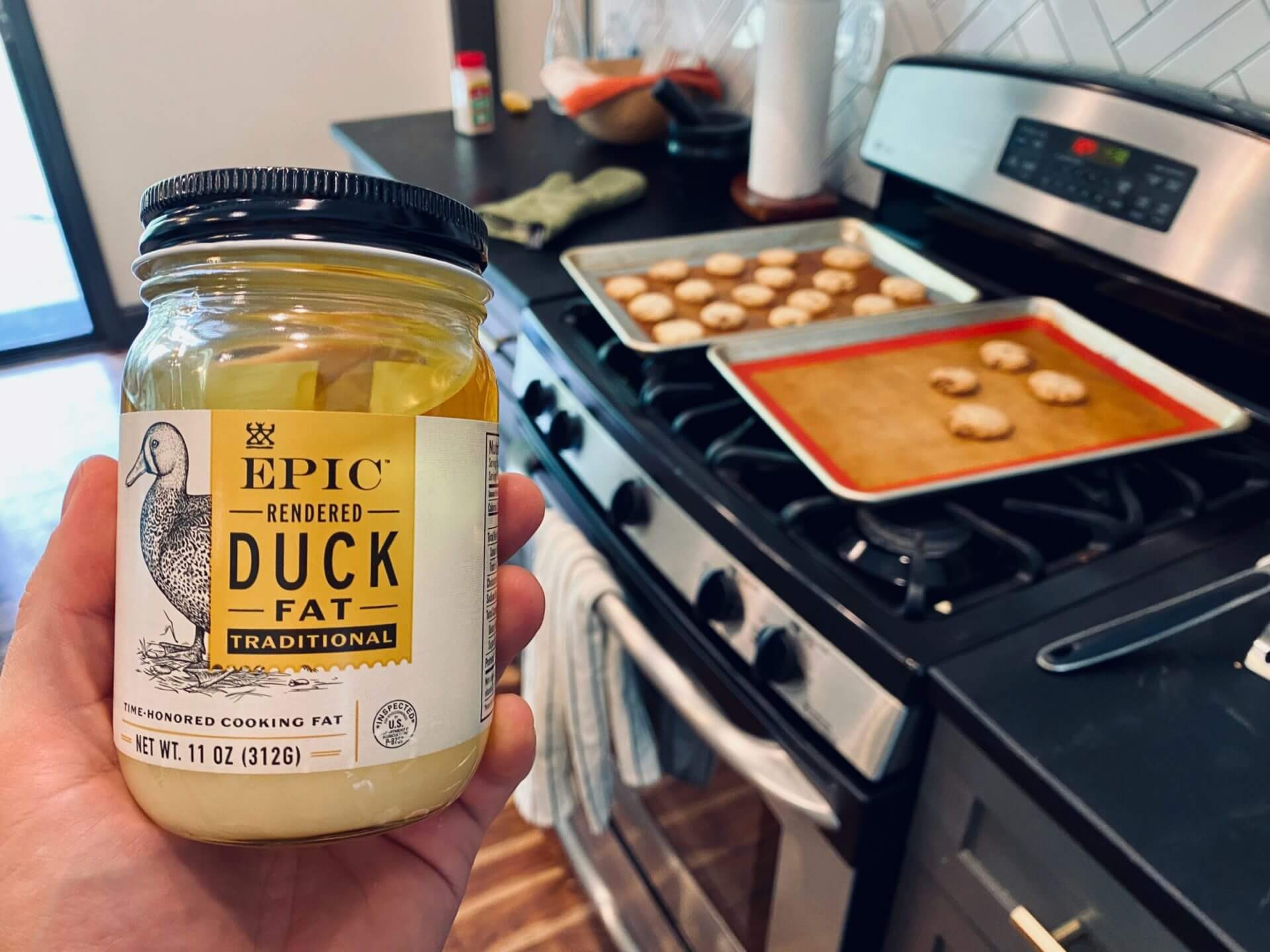
P.S. — those are keto cookies in the background.
Duck fat and other animal fats were popular cooking oils as recently as a few decades ago. Just ask your grandmother what she used to cook with. It probably wasn’t canola oil.
The main reason why I like using duck fat is its flavor. I like to say that everything tastes good when combined with bacon (fat), and I think the same is true for duck fat; it makes food taste better.
Additionally, duck fat contains about 50% monounsaturated fatty acids in the form of oleic acid. This fatty acid is also known as omega-9 and has been shown to reduce inflammation and improve cardiovascular health.
We use duck fat from EPIC Provisions, which you can find at Whole Foods and Amazon, for frying and sauteing.
6. Ghee

Ghee is made by clarifying butter, which involves warming it over medium-low heat and skimming off protein and other “impurities.”
In other words, it’s mostly fat and thus free of proteins and milk sugar that might cause issues in people who are allergic to dairy. It’s also one of the reasons why ghee is generally considered to be paleo-friendly, whereas other dairy products are not.
The primary reason why we like to use ghee from pasture-raised cows is that it adds a buttery flavor to meals and baked goods. So we use it for frying, sauteing and baking.
The other advantage of ghee is that it has relatively low amounts of polyunsaturated fatty acids, which makes it a great choice for frying and baking.
I also used to carry single-serving pouches of ghee from a brand called 4th & Heart in my travel backpack. It makes for an excellent keto-friendly and fat-only snack when I’m on the go. Unfortunately, the company stopped selling them.
We buy grass-fed ghee from Gold Nugget Ghee using a monthly subscription. If buying grass-fed isn’t in your budget, I recommend looking at Costco, as they sell a large container of regular ghee at a reasonable price.
Make sure to use discount code MK10 to get 10% off your next Gold Nugget Ghee order.
7. Lard
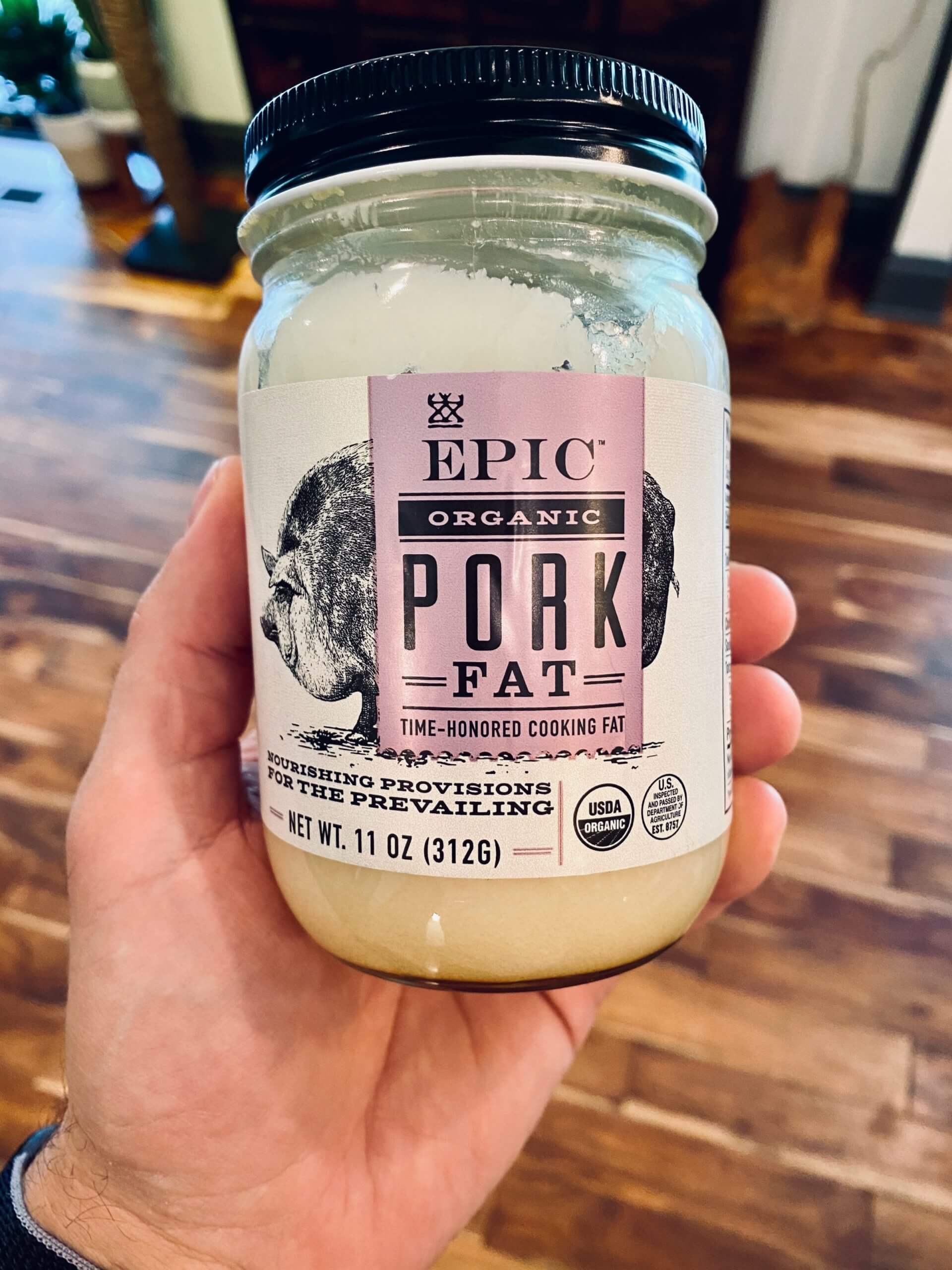
Lard is rendered pork fat and it makes everything taste good — including veggies you wouldn’t touch otherwise. When we want the kids to try something new (Brussels sprouts, for example), we fry it in lard and they eat it happily.
Lard (and bacon for that matter) has a bad reputation for being unhealthy because it’s relatively high in saturated fats (compared to vegetable oils). To this day, otherwise reputable outlets including Havard Health spread myths such as “the main health issue with dietary fats is how they influence cholesterol levels. Consuming high amounts of saturated fat produces more LDL (bad) cholesterol, which can form plaque in the arteries and increase your risk of cardiovascular disease and stroke.”
Such myths have been long busted by scientific research and state-of-the-art reviews.
Rendered pork fat has a relatively low smoke point of 374 degrees Fahrenheit. Paired with a polyunsaturated content of about 11%, that makes it a tad less heat-resistant than other fats. That’s why we use it only for pan frying and sauteing.
But unlike other cooking oils, we don’t usually buy lard. Instead, any time we fry pastured bacon in a pan (usually several times a week), we save the fat and re-use it.
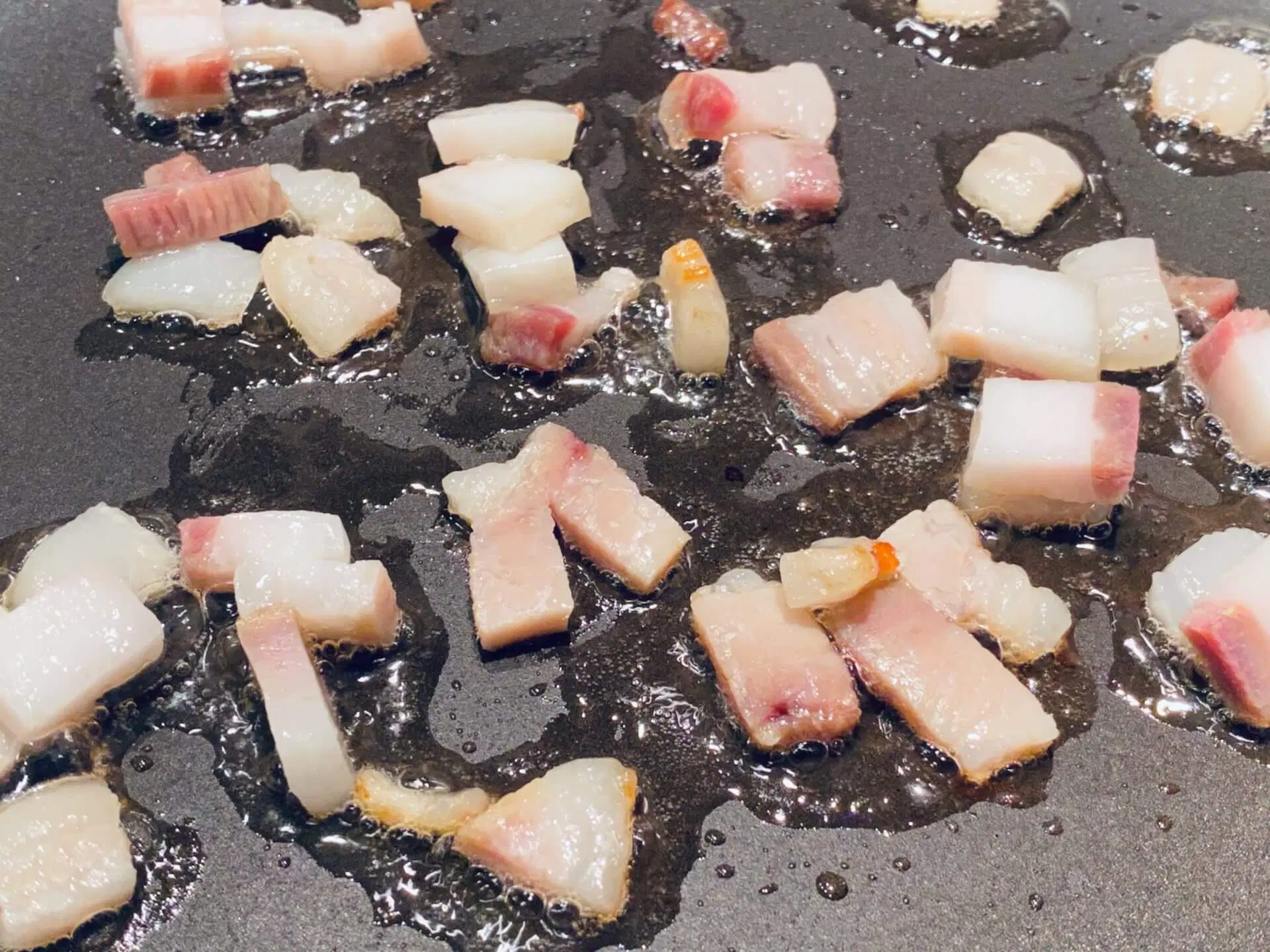

As a kid in Austria, we often enjoyed cold pork fat for dinner as part of a dish called Jause. We would simply smear the fat on bread, much like you would do with butter. That might sound gross, but it’s actually quite tasty. Remember: everything tastes great with bacon fat.
These days, I don’t eat regular bread anymore, but I still occasionally practice that tradition with the keto bread rolls we make at home.
On those rare occasions when we do buy lard, we usually pick up a jar of EPIC Provision’s pork fat from Whole Foods or Amazon.
8. Olive Oil

Everyone knows that olive oil is good for your health. But what most people don’t know is that a lot of the extra-virgin olive oils (EVOOs) you can find on the shelves of grocery stores aren’t pure, but rather mixed with cheap substitutes like vegetable oils. On top of that, they’re old, and have thus started degenerating, resulting in fewer nutrients.
That’s why we exclusively use EVOO from Kasandrinos, a family-owned company that produces some of the best olive oil on the market (see my Kasandrinos review for more info).
The second thing that many people don’t know is that olive oil can be submitted to high temperatures because its antioxidants protect the fatty acids from oxidizing.
So we often use olive oil for frying, sauteing and even for baking. My wife recently made keto bread using olive oil and it tasted absolutely delicious (and not like olives at all).
Of course, we also use olive oil for salad dressings. And I just pour it over most of the meals that I eat.
9. Palm Oil
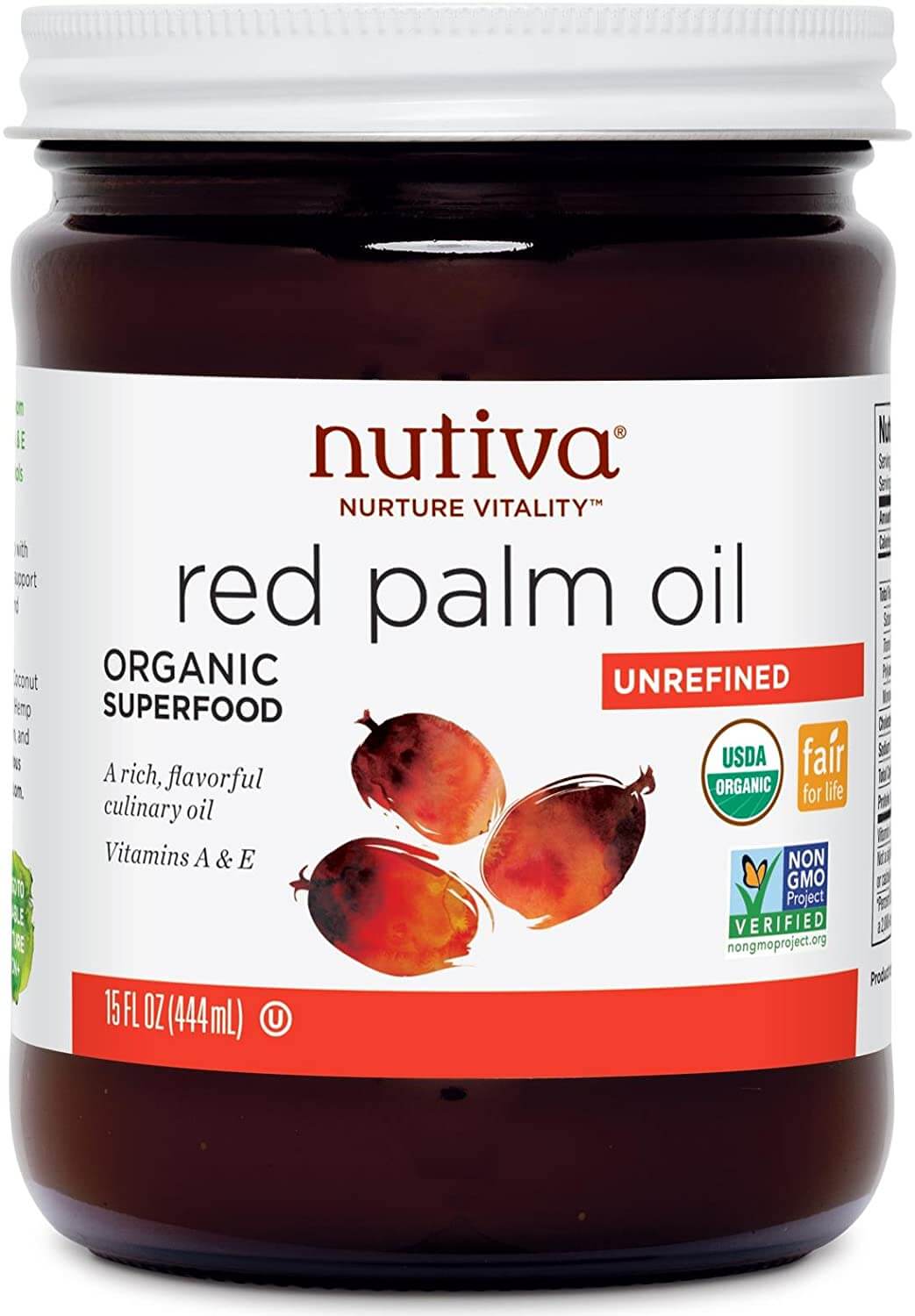
High-quality and responsibly-harvested palm oil (palm kernel oil or red palm oil) is an excellent choice for high-heat cooking, baking and deep frying. That’s because palm oil consists mostly of saturated and monounsaturated fatty acids that make it incredibly heat resistant.
We use palm oil (palm shortening, to be specific) for baking. I’ve never tried red palm oil, but I’ve been told that it has a very strong flavor that doesn’t go well with all dishes.
On the bright side, unrefined palm oil is chock full of vitamins and antioxidants, including vitamin E.
The problem with palm oil is that it’s often harvested irresponsibly, especially in developing countries. So if you purchase palm products, make sure they carry a certification that attests to their harvesting method. Alternatively, you can stay away from palm oil altogether and use any of the other fats I mention in this article.
10. Tallow

Tallow is rendered beef fat. It’s another “forgotten” cooking oil that was popular among our grandparents’ generation.
What’s great about tallow is that it has a relatively high smoke point of 400 degrees Fahrenheit and a high saturated fatty acid concentration, so you can easily use it for medium-heat to high-heat cooking, such as pan frying.
We don’t use tallow on a regular basis. Not because we don’t like it, but because we have a huge selection of the other fats I mention in this article. And since most of the products we use are on autopilot (e.g., we get recurring deliveries from Amazon Subscribe & Save, etc.), we rarely take the opportunity to buy tallow.
When we have bought tallow in the past, we’ve usually picked up a jar at Whole Foods or on Amazon. We like the product offered by EPIC Provisions because it’s made from grass-fed sources.
Fatty Acid Composition of Cooking Oils
If you’d like to learn more about these cooking oils and their fatty acid composition, you can check out the table below. I’d also encourage you to read my article about the differences between the various types of fatty acids and their health implications.
In a nutshell, there are three types of fatty acids:
- Saturated fatty acids are the most stable type. That’s why oil with high amounts of saturated fats is generally more heat resistant. Medium-chain triglycerides (MCTs) are a popular example of saturated fatty acids.
- Monounsaturated fatty acids have a single (mono) double-carbon bond. They’re also relatively heat resistant. Omega-9 (oleic acid) is a popular example of a monounsaturated fat.
- Polyunsaturated fatty acids (PUFAs) contain multiple (poly) double-carbon bonds, and thus oxidize relatively quickly when exposed to high heat (or even air). Most nuts and seeds have high concentrations of PUFAs (in particular, omega-6), which is why I don’t recommend using their oils.
| Saturated | Monounsaturated | SFA + MUFA | Polyunsaturated | |
|---|---|---|---|---|
| Avocado oil (extra virgin) | 11% | 71% | 82% | 14% |
| Butter (pastured) | 60% | 25% | 85% | 3% |
| Camel hump fat | 55% | 28% | 83% | 3% |
| Coconut oil (cold-pressed, extra virgin) | 86% | 6% | 92% | 1% |
| Duck fat | 36% | 51% | 87% | 13.7% |
| Ghee | 62% | 29% | 91% | 4% |
| Lard (rendered pork fat) | 32% | 41% | 73% | 11% |
| Olive oil (extra virgin) | 14% | 71% | 86% | 10% |
| Palm oil | 80% | 15% | 95% | 2.5% |
| Tallow (rendered beef or mutton fat) | 46% | 38% | 84% | 4% |
Note that the percentages don’t add up to 100 because some of the fatty acids contain chemical compounds (such as glycerol) that don’t count as fat as far as the “weight” listed on the nutrition label is concerned.
Smoke Point vs. Heat Resistance
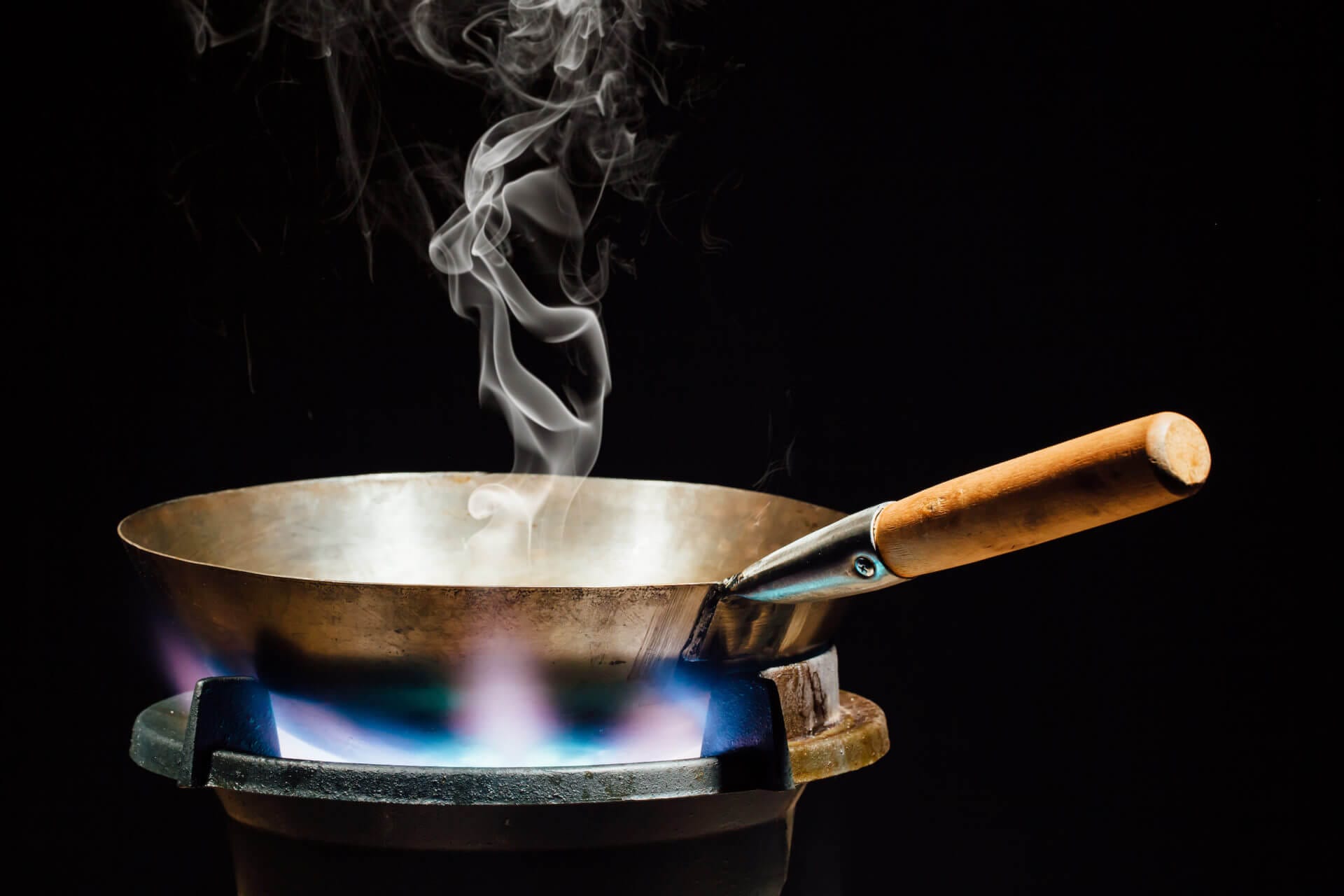
When choosing an appropriate cooking oil, many people get hung up on the so-called smoke point, which indicates the temperature at which the oil burns and forms smoke.
However, what most people don’t know is that smoke point isn’t a great indication of how heat resistant an oil is. So let me explain.
Technically, the smoke you see when you heat up oil beyond its smoke point is a combination of free fatty acids and other impurities. Other fatty acids, and in particular saturated and mono-unsaturated fatty acids, often withstand much higher temperatures than the oil’s smoke point might indicate.
In case you’re wondering, free fatty acids are (as the name implies) those acids that aren’t bound to the same chemical structures (called esters) as more stable fatty acids.
Besides free fatty acids, polyunsaturated fatty acids are also susceptible to getting damaged (oxidation) when exposed to high heat.
Oxidation alters the chemical structure of fatty acids and makes them pro-inflammatory.
However, some oils, such as extra virgin olive oil, contain a lot of antioxidants that protect the weaker PFUAs from oxidation. That’s the main reason why it’s perfectly fine to heat up olive and use it for frying and sauteing.
Taking all of the above information into account, I always look at the amount of PFUAs (in particular, omega-6 linoleic acid) and antioxidants an oil contains to judge its true ability to withstand high heat. So don’t get too hung up on the smoke point alone.
Why You Should Stay Away From Vegetable Oils
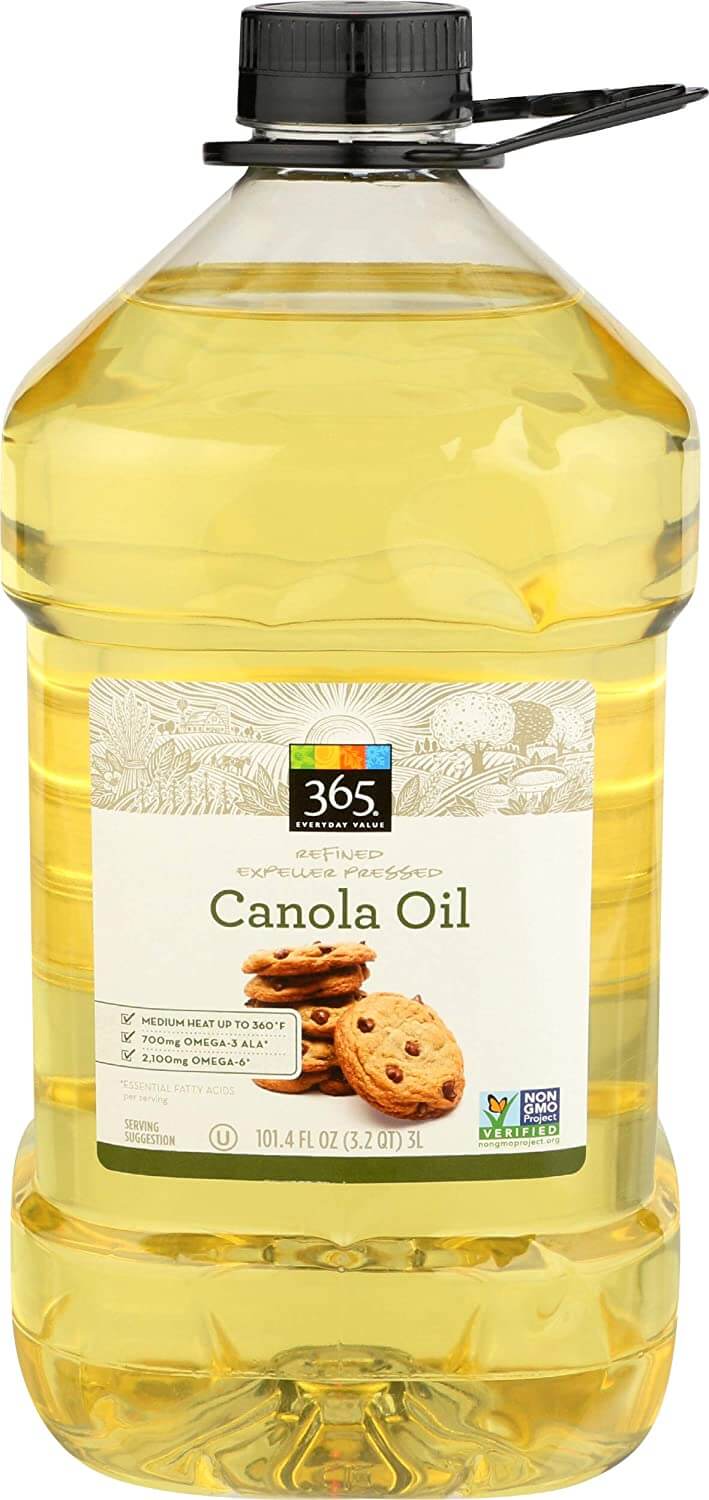
The most widely used oils in the United States are vegetable oils. However, that term is very misleading because most vegetable oils, such as soybean and canola oil, are actually seed oils.
The problem with most seed oils is that they’re produced using high heat or harsh chemicals, because it’s almost impossible to extract oil from seeds by cold-pressing them.
That’s one of the reasons why I highly recommend you stop using seed oils, even if they’re much less expensive than their healthier counterparts.

The second reason why you shouldn’t use seed oils is their high polyunsaturated fatty acid content (in particular, omega-6). You can learn more about that in my article about the best nuts and seeds for keto, but in a nutshell (pun intended), most omega-6 fatty acids, and linoleic acid in particular, are inflammatory and oxidize quickly when exposed to heat.
Taking the above information into account, I recommend staying away from specifically these vegetable (seed) oils, especially when it comes to high-heat cooking:
- Canola oil: Made using hexane solvent and low in saturated fats.
- Corn oil: Extracted using solvents and refined using degumming and/or alkali treatment.
- Cottonseed oil: Cotton seeds naturally contain a toxin called gossypol that has to be removed by refining the oil using solvents.
- Grapeseed oil: Cheap byproduct of wine making and manufactured using chemical solvents.
- Peanut oil: Rich in unstable omega-6 fatty acids. Plus, most peanut oils are blended with even cheaper oils.
- Safflower oil: Highly refined and contains 79% of heat-sensitive polyunsaturated fatty acids.
- Sesame oil: Consists of 82% unsaturated fatty acids, especially pro-inflammatory omega-6.
- Soybean oil: Extracted using solvents, including hexanes.
Note that some of the oils mentioned above are comparatively rich in omega-6 fatty acids (e.g., olive oil or avocado oil) but they contain antioxidants to protect those heat-sensitive omegas from oxidation.
Frequently Asked Questions
Absolutely not. The latest state-of-the-art review on saturated fat shows absolutely no link between saturated fat consumption and cardiovascular disease (heart disease).
Fat from grass-fed and pasture-raised animals has more omega-3 and less omega-6 fatty acid. That makes grass-fed lard and tallow (and also meat) healthier and less inflammatory.
Plus, I care about animal welfare and strongly believe that most animals in this country aren’t taken care of well enough.
I generally stay away from seed oils because they don’t offer anything that I can’t get from the types of oils I mentioned in this review. However, if you like the taste of it, cold-pressed high-oleic sunflower oil is your best option.
I’ve never tried this, but considering that MCTs are saturated fatty acids, there is no reason why you couldn’t.
Ghee made from butter doesn’t contain any harmful trans fats. Only ghee made from vegetable oils (vegetable ghee) contains trans fats because manufacturers hydrogenate it during manufacturing.
No! The best way to lose weight (in the form of body fat) is to eat lots of healthy fats and to reduce your carbohydrate intake. So don’t be afraid to be generous when using cooking oils. I drizzle olive or avocado oil over most of my meals and soak everything in animal fat that I make in a pan, including eggs, meat and veggies.
No, the smoke point of an oil is not necessarily a reliable indication of the oil’s heat resistance. Olive oil, for example, has a relatively low smoke point but is incredibly heat resistant thanks to its protective antioxidants.
None of the healthy oils mentioned in this article are great sources of omega-3. So if you’re trying to increase your omega-3 intake, I recommend looking at anchovies, mackerel, salmon, sardines and pastured eggs.
Best Oils for a Ketogenic Diet
If you search Google for the best cooking oils, you get a lot of misleading and scientifically unsound information that’s mostly focused on the smoke point of oils. You’ll also find articles recommending industrial vegetable oils.
I’m hoping this article helps to clear up some of those misconceptions and helps you make better choices when it comes to buying cooking oils for your keto recipes.
If you’ve learned something new from this article, let me know by leaving a comment below. If you have a question about a cooking oil I haven’t mentioned, let me know that as well.

Michael Kummer is a healthy living enthusiast and CrossFit athlete whose goal is to help people achieve optimal health by bridging the gap between ancestral living and the demands of modern society.
Medical Disclaimer
The information shared on this blog is for educational purposes only, is not a substitute for the advice of medical doctors or registered dieticians (which we are not) and should not be used to prevent, diagnose, or treat any condition. Consult with a physician before starting a fitness regimen, adding supplements to your diet, or making other changes that may affect your medications, treatment plan or overall health. MichaelKummer.com and its owner MK Media Group, LLC are not liable for how you use and implement the information shared here, which is based on the opinions of the authors formed after engaging in personal use and research. We recommend products, services, or programs and are sometimes compensated for doing so as affiliates. Please read our Terms and Conditions for further information, including our privacy policy.

Hi, This is excellent article.
As an Indian, I make my own ghee. It is incredibly simple and I am in control of the fact it is organic. I buy 4 packets of organic unsalted butter. Bung them into a thick-bottomed pan, heat them on medium/high heat to break up the butter and melt it, then keep it on a low-medium heat level that allows a gentle bubbling of the surface. Do not stir it from this point! For about 45-50 minutes I allow it to cook very gently, until all liquid is clear golden-brown and solids are floating on top and changing colour. Some do this in 15-20 mins, so they are using a wider shallower pan and higher heat. The further you go in the depth of colour of the liquid (mine resembles a quite intense darker honey colour), the nuttier and sweeter the profile of the ghee, but it’s a fine line between that and burning it, so go under at first. When you take it off the heat, it will continue to cook for a while, so allow for that.
Allow it to cool (but still whilst liquid) to pass through a sieve into a clean (and completely dry) glass jar.
This will last at least 6 months kept free from humidity, in cupboard (longer in fridge), but it never gets close to that in my house – I use a generous 2 tbsps per curry!
There is no substitute in terms of taste for home-made ghee … please try it!
Thanks for the recipe, I appreciate it!
PS: Apologies for the late reply. Your comment got accidentally deleted by my anti-spam plugin and I just found out about it.
Thanks for writing this article on healthy oils and fats. I think it is an uphill battle countering 60 years of misinformation about the health implications of eating saturated fats, but thoughtful articles such as this certainly pave the way. In our household we use lots of pastured butter, ghee, bacon fat, avocado and olive oil. We use California Olive Ranch olive oil for cooking, and O Olive Oil organic olive oil for salads. O Olive Oil also makes some great vinegars including a nice white balsamic.